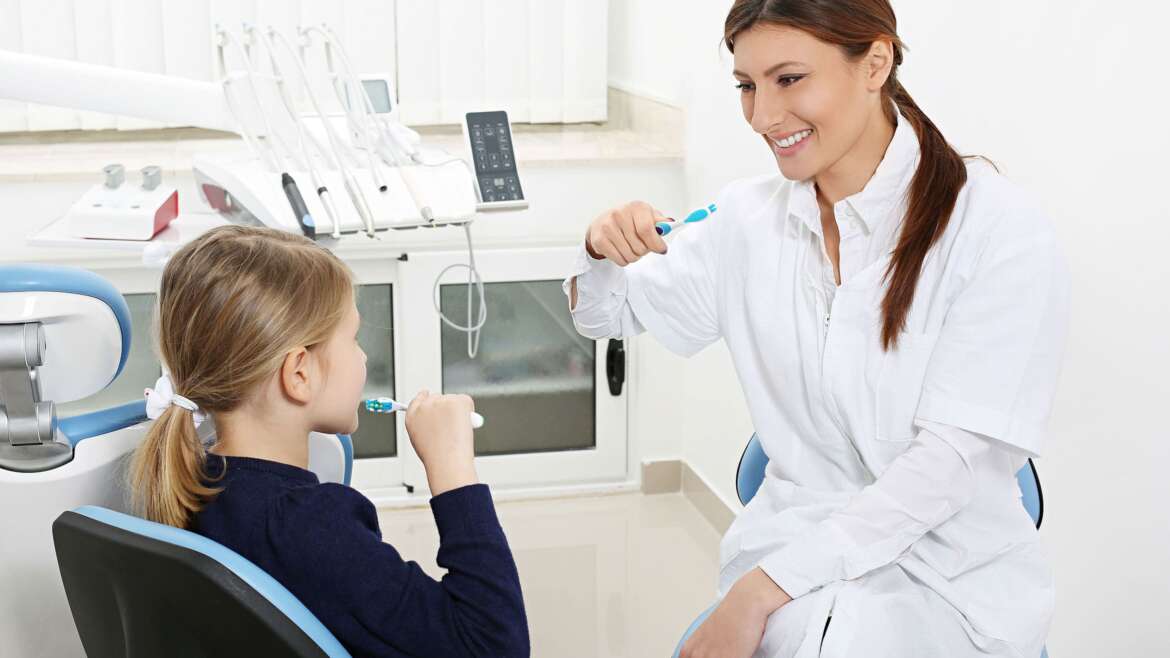Building Healthy Habits for a Lifetime
Instilling proper brushing and flossing habits early helps children prevent cavities, gum disease, and promote lifelong oral health. With engaging routines and parental support, caring for teeth can become a positive part of daily life.
Why Teaching Proper Technique Matters
Tooth brushing and flossing remove plaque that causes decay and inflammation. Using correct methods early helps children develop strong dental hygiene habits that last a lifetime. Flossing—once daily—can remove up to 80% of plaque buildup between teeth sissonfamilydental.com+12Michael Colleran, DDS+12yorktownpediatricdentist.com+12Houston Pediatric Dental Specialists.
When to Start Brushing and Flossing
-
Brushing should begin as soon as the first tooth appears (around 6 months), using a soft, age-appropriate toothbrush and a tiny smear of fluoride toothpaste Houston Pediatric Dental Specialists.
-
Flossing should be introduced when two teeth touch, typically between ages 2–3. Parents should assist until around ages 7–8 when kids can floss independently Verywell Health+15Smiles Dentistry 4 Kids+15The Guardian+15.
Brushing Technique: Step-by-Step Tips
-
Let your child watch you brush and mirror your actions to build familiarity Dr. Mark Bilello, DDS+11knollwooddentalcare.com+11Thrive+11.
-
Use a pea-sized amount of fluoride toothpaste (or rice-grain smear for kids under 3) Wikipedia+15knollwooddentalcare.com+15Wikipedia+15.
-
Hold the brush at a 45° angle toward the gum line. Use gentle circular motions on all surfaces: outer, inner, chewing, and tongue Wikipedia+6knollwooddentalcare.com+6Verywell Health+6.
-
Brush for a full two minutes, twice a day – timers, songs, or apps work well Wikipedia+3yorktownpediatricdentist.com+3Houston Pediatric Dental Specialists+3.
Flossing Technique and Tools
-
Use about 18 inches of floss, wrapping it around fingers to create a clean section for each tooth Smiles Dentistry 4 Kids+1Houston Pediatric Dental Specialists+1.
-
Slide floss gently between teeth, forming a “C” shape and moving under the gumline with an up-and-down motion fairmontwvdentist.com+4Wikipedia+4Wikipedia+4.
-
Consider using child-friendly floss picks or interdental brushes if dexterity is limited Palmetto Kids Dentistry+8Wikipedia+8The Guardian+8.
How to Make Oral Hygiene Fun and Engaging
-
Turn it into play: Create games, superhero stories, or plaque-fighting adventures using colorful toothbrushes and flossers Dr. Mark Bilello, DDS+1Houston Pediatric Dental Specialists+1.
-
Use tools like timers: Tooth timers or phone timers help kids brush for the full two minutes and stay focused The Guardian+6Palmetto Kids Dentistry+6Houston Pediatric Dental Specialists+6.
-
Reward progress: Sticker charts or small rewards reinforce consistent habits qualityfamilydentist.com+1compasshealthnetwork.org+1.
Addressing Common Challenges
| Challenge | Solution |
|---|---|
| Short attention spans | Play music or use timers to make brushing more engaging. |
| Difficulty reaching areas | Use child-size brushes, guide brushing in sections, and supervise thoroughly Houston Pediatric Dental Specialists+1Michael Colleran, DDS+1Thrive. |
| Missing floss routine | Introduce floss picks first and use praise or reward charts Smiles Dentistry 4 Kidsadvanceddentalcomfort.com. |
Why Parental Role Matters
Children learn best by example—when parents brush and floss alongside them, it reinforces healthy behavior. Until about age 7 or 8, most kids need help to brush effectively. Parents should supervise and gradually shift responsibility as technique improves knollwooddentalcare.comThriveyorktownpediatricdentist.com.
FAQs
When should brushing and flossing start?
Begin brushing at first tooth eruption (~6 months) and introduce flossing as soon as teeth touch (~age 2–3), with supervision until age 7–8.
How long should my child brush?
Two full minutes twice daily. Songs, timers, or bathroom clocks help children stay on task.
Which flosses are best for kids?
Child-sized floss picks or waxed floss work well. Interdental brushes may suit kids with braces or tight spaces.
How do I encourage regular flossing?
Make flossing part of the nightly bathroom routine and use stickers or simple rewards to reinforce participation.
Final Thoughts
Teaching your child to brush and floss effectively takes patience, fun ideas, and consistent guidance. With parental involvement and creative routines, these habits become second nature—leading to healthier teeth and happier smiles for years to come.
💬 Ready to give your child’s oral hygiene the best start? Book a visit at AmeriDental to learn more about pediatric care and habit coaching.




